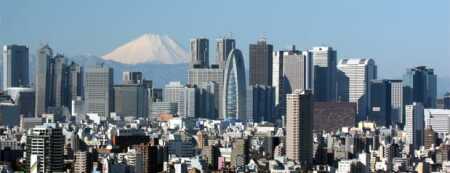It has been 15 months since the devastating triple disaster struck north-east Japan. While much progress had been made in recovery, the Japanese government’s energy policy is still uncertain and Tokyo faces the possibility of power shortages over the summer.
Meanwhile, with the world economy struggling and Europe facing deteriorating political, financial, and social conditions, participants at the July 7 ULI Japan Summer Conference in Tokyo speculated about the potential of the island nation as an international financial center and destination.
“We have to come back to the top of Asia,” said keynote speaker Hiroshi Mizohata, special adviser to the Japanese cabinet. “We have to be hungry,” he said.
Mizohata pointed out that, unlike other countries in Asia such as Thailand and Singapore, Japan has not, until relatively recently, tried hard to promote tourism. The result is that Japan ranks 30th in the world for inbound tourism and 8th in Asia.
Strengthening tourism would certainly help Japan’s conference sector. “The challenge here is infrastructure,” said Mizohata who recently headed Japan’s tourism agency. He urged audience members to “develop the facilities to make Japan more competitive in the international market.”
Japan’s hospitality is widely admired, he said, but a lack of space in hotels and other facilities is often an issue.
Mizohata also urged the development of casino resorts in Japan, noting their role in Singapore’s tourism success. The Japanese government has been deliberating on casinos for a decade, but has yet to reach a consensus.
Japan’s proximity to rapidly growing nations in Asia means a huge market is waiting, said Mizohata. According to Japanese government estimates, 200 million people from China alone will travel abroad annually in 2020.
Tokyo as a Leading Metropolis
Tokyo, with a population of 35 million is the largest urban agglomeration in the world. Yet Japan’s capital is slowly losing international competitiveness, according to Professor Hiroo Ichikawa of Meiji University.
Leading the first discussion panel of the ULI Japan Summer Conference, Ichikawa focused on the Global Power City Index 2011, which he helped author for the Mori Memorial Foundation, which researches urban development for the purpose of building a sustainable society for the future
Of particular concern for Ichikawa was that the survey found Tokyo was “not liked by managers.” Among reasons given were Japan’s high corporate tax rate, the relatively poor accessibility of the Narita International Airport, and concerns about business continuity planning (BCP) in response to potential earthquakes and flooding.
On the other hand, Tokyo boasts safety, efficiency, hospitality, diversity of development, and a first-class restaurant scene.
Japan’s capital trails New York, London, and Paris, but is still one place ahead of its closest Asian competitor, Singapore—at least for now.
“We need to figure out a grand design for Tokyo quickly,” said Ichikawa.
Junko Inokuma, Deputy Director of the government’s General Revitalization Bureau, said she was also “concerned about the competitive power of Tokyo waning.”
The government is now engaged in promoting Tokyo as an Asian business center and working hard to encourage companies to locate their regional headquarters in the metropolis.
Under consideration are corporate tax breaks, improvement in business support, living environment development, and strengthened business continuity planning.
Rebecca Green of Environmental Resource Management Japan agreed that disaster preparedness is a key issue. “We need to convince people that Tokyo is safe—especially foreigners looking to invest in the city,” she said.
Turning to her main area of expertise, she noted that Tokyo is a leader in greenhouse gas regulation and pioneer in cap and trade.
Nevertheless, one area for improvement could be regulation on soil contamination, which has proved a risk for some developers. Another is the relatively poor sustainability of older buildings. Incentives could help, Green said.
Takeo Nishitani—of Weber Shandwick Worldwide, the media relations company managing Tokyo’s bid for the 2020 Olympics—was bullish about the city’s attractions. “Tokyo has everything,” he said.
Reflection on the 2011 Disasters
Katsunobu Sakurai, mayor of Minami-Soma, a northeastern city hit by the earthquake and tsunami reminded conference participants of the trauma that Japan experienced in the prior year. Sakurai rose to global prominence following the devastation of March 2011 with an impassioned online plea for help. In 2011 he was named one of Time Magazine’s 100 most influential people in the world for his frank criticism of the government’s response to the crisis.
His sobering account of the disaster’s effect on his hometown began with a slide of destroyed paddies. One photo showed boats dumped in the grounds of an elementary school three kilometers (two miles) from the sea.
He lamented the lack of government support following the disasters and a lack of progress in dealing with debris.
Read more about the 2012 ULI Japan Summer Conference:





